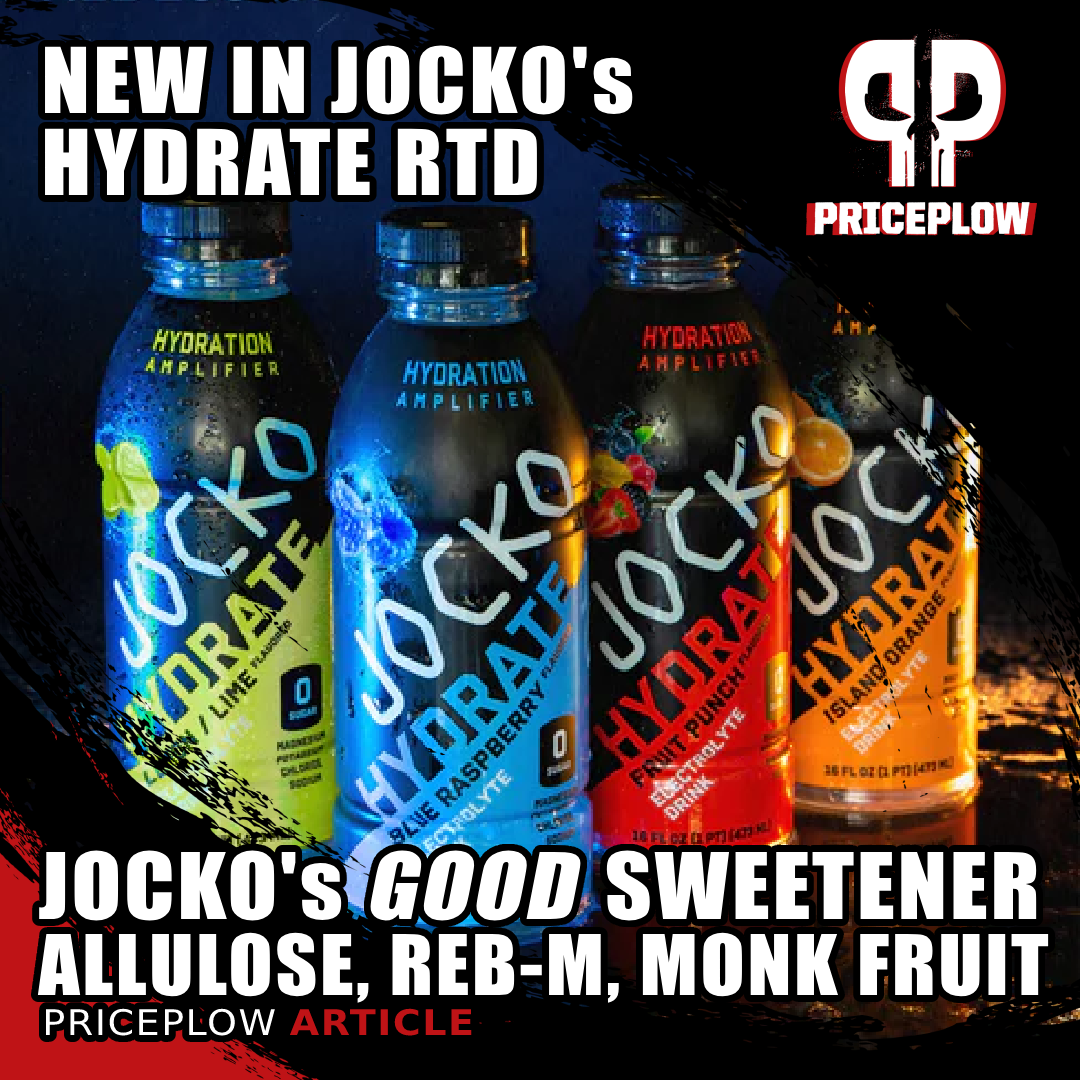
The Jocko GOOD Sweetener is a natural blend of allulose, reb-M (rebaudioside-M), and monk fruit extract that was introduced in Jocko Fuel Hydrate RTD.
One of the biggest hurdles in the supplement industry is flavoring -- and with that comes sweetening. After all, the demographic that is interested in performance-boosting supplementation is the same demographic that has the sense to be wary of unnecessary sugar intake and overall ingredient quality.
Avoiding Sugar (and Corn Syrup) is Just the Start
Classic sugar (sucrose), and God forbid – corn syrup – are obvious sources of empty calories and can promote metabolic distress and weight gain in all the wrong areas, especially in sedentary individuals. As a result, brands have gone to great lengths to provide athletes with zero calorie sweetener options -- also known as non-nutritive sweeteners.
Non-Nutritive Sweeteners: From Aspartame to Sucralose

Get ready for an epic interview - in Episode #111 of the PricePlow Podcast, we brought on Brian Littlefield, Chief Product Officer of Jocko Fuel, who announces the new naturally-sweetened Jocko Pre-Workout
The issue with many of these, such as aspartame, is that they generally taste... "fake". They don't provide the same satisfaction as sugar, so the consumption experience is never quite as enjoyable as it should be. Beyond taste, there's also an abundance of data showing deleterious effects from aspartame.[1,2] Saccharin is just as controversial.[3,4]
And then there's sucralose, the darling of the dietary supplement industry. Back on Episode #111 of the PricePlow Podcast, we sat down with Brian Littlefield, cofounder of Jocko Fuel. In that episode, Brian argued against the use of sucralose in supplements, largely due to the changes it can promote the gut microbiome.[5]
Jocko Willink himself told us in Episode #132 that from day one, it was decided that they'd be using all-natural sweeteners and better heavy metals testing. The challenge was on.
Next-Generation Sweeteners: Introducing the GOOD Sweetener
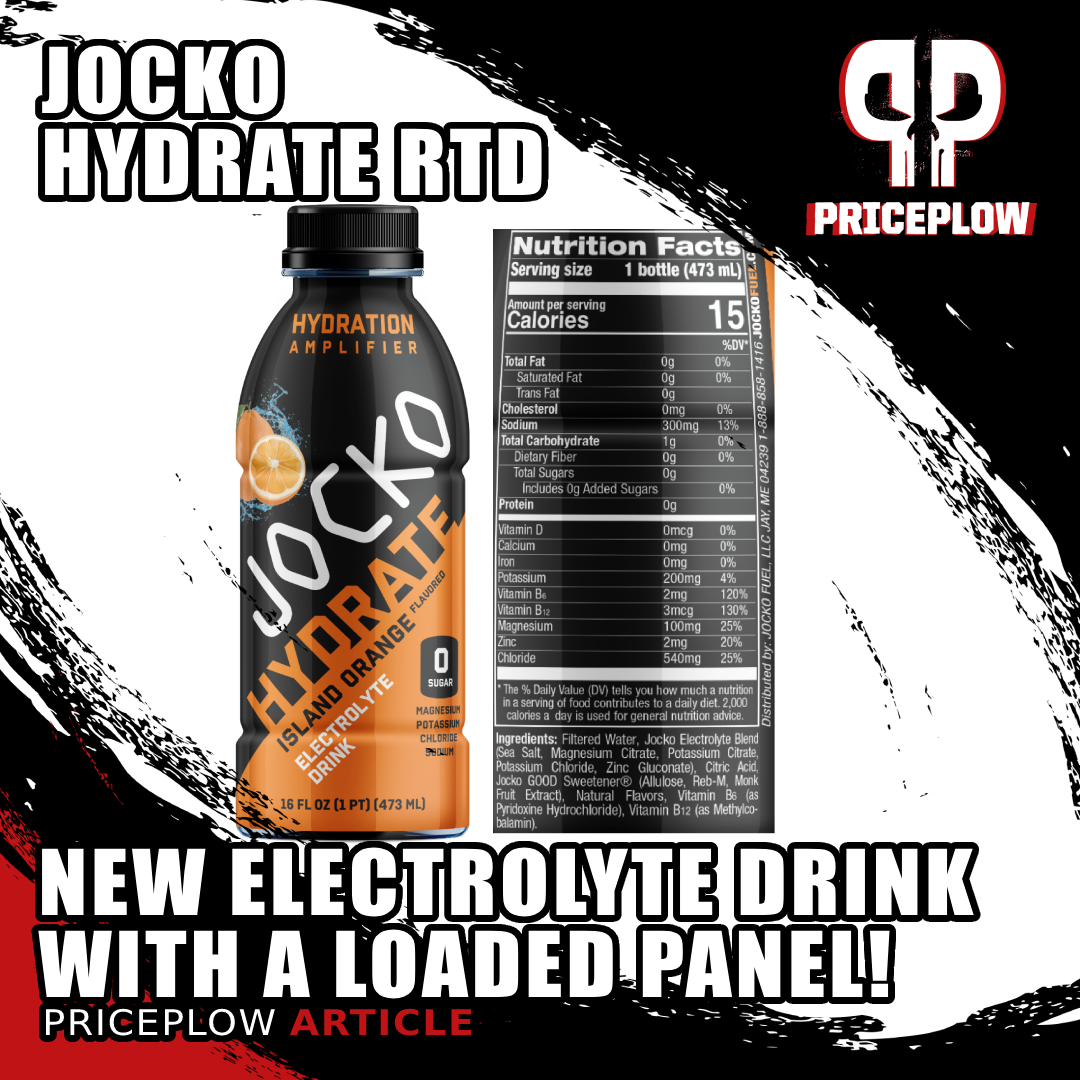
Jocko Fuel has revealed the Jocko Hydrate RTD drink, an absolutely delicious hydration beverage that stays true to Jocko's mantra of no artificial colors or sweeteners
For years now, Brian and his team have been working hard -- both internally and with trained flavor scientists -- to perfect natural sweeteners. The Jocko GO energy drink has always been naturally-sweetened, but earlier versions were, as Jocko himself put it, "rough".
Over time, however, they've finally figured it out. The GOOD Sweetener -- introduced in the Jocko Hydrate Drink RTD -- is their answer. And if you've had this RTD, you'll know that it is indeed GOOD -- better than good, in fact.
This is one of the biggest innovations to come out of the Jocko camp. It's built with three natural, low-calorie sweeteners – allulose, Reb-M, and monk fruit extract – a blend that's beneficial to both your health and your taste buds.
We're going to dive into a little summary on how Jocko GOOD Sweetener works, but first, let's check PricePlow for good Jocko deals:
Jocko Fuel Hydrate Drink RTD – Deals and Price Drop Alerts
Get Price Alerts
No spam, no scams.
Disclosure: PricePlow relies on pricing from stores with which we have a business relationship. We work hard to keep pricing current, but you may find a better offer.
Posts are sponsored in part by the retailers and/or brands listed on this page.
This area is reserved for Team PricePlow's upcoming Ingredients video.
Subscribe to our channel and sign up for notifications so you catch it when it goes live!
Back in the day, the Jocko GO energy drink was heavier in monk fruit. But it needed something more. Brian and his team have the trifecta, and it doesn't contain sugar alcohols!
Jocko GOOD Sweetener – How It Works
Allulose
Allulose is a natural sweetener also known as D-psicose.[6] This sweetener mimics the taste and texture of traditional sugar, offering 70% of its sweetness while containing only 10% of its calories (0.4 calories per gram).[7]
Found in small amounts in foods like raisins, figs, and jackfruit, allulose is noted for its high solubility and ability to improve the gelling of certain food products. Recognized as safe by the FDA,[8] allulose is approved for use in various products, including cereal bars, making it a health-conscious alternative to regular sugar.
In addition, allulose has functionalities that can help attenuate postprandial glucose levels, fat mass accumulation, and anti-aging properties. One study found D-Allulose as a valuable tool for blood glucose management in both healthy and diabetic patients.[6]
Reb-M
Rebaudioside M (Reb M) is a compound that can be isolated from stevia,[9,10] but also fermented sugar cane and other plants. It's a highly-potent sweetener, clocking in at 200-350 times the strength of sucrose according to tests conducted with the Beidler Model.[9] In addition, it has a high affinity for blending, making it eminently functional in the food and beverage industry.
Reb-M is the answer to stevia's woes
We're finding that stevia just doesn't cut the mustard for most consumers -- the bittersweet flavor is just a bit too much to overcome, even though stevia refining has definitely improved over the past decade.
There are several rebaudiosides, but reb-M seems to be the most general answer. Whether it's isolated from stevia or fermented sugarcane doesn't make a huge difference to us, although some consumers who have soured on stevia in the past may prefer to simply never see it named on the label at all. Jocko Hydrate RTD does not show stevia anywhere on the label.
Monk Fruit Extract
Finally, the popularity of monk fruit extract as a zero-calorie sweetener has boomed in recent years, largely in response to disappointment in stevia (and as the price has started to come down a bit). Like Reb-M, it is intensely sweet (roughly 100-250 times as sweet as sugar),[11] and it anecdotally doesn't carry the same artificial taste as do other sugar substitutes.
Monk fruit extracts are produced by removing the seeds from the monk fruit and crushing the flesh. The sweet taste comes from compounds called mogrosides, which are not absorbed in the upper gastrointestinal tract, thereby yielding no calories.[12-14] Monk fruit extracts are Generally Recognized As Safe (GRAS) by the FDA.[15]
This is traditionally the sweetener Jocko Fuel relied upon, and it stays in the blend -- but as time and technology has progressed, monk fruit has received the help it needed in the Jocko GOOD Sweetener blend, and we love how they've done it with allulose and Reb-M.
Healthy, Satisfying, and not Artificial Tasting
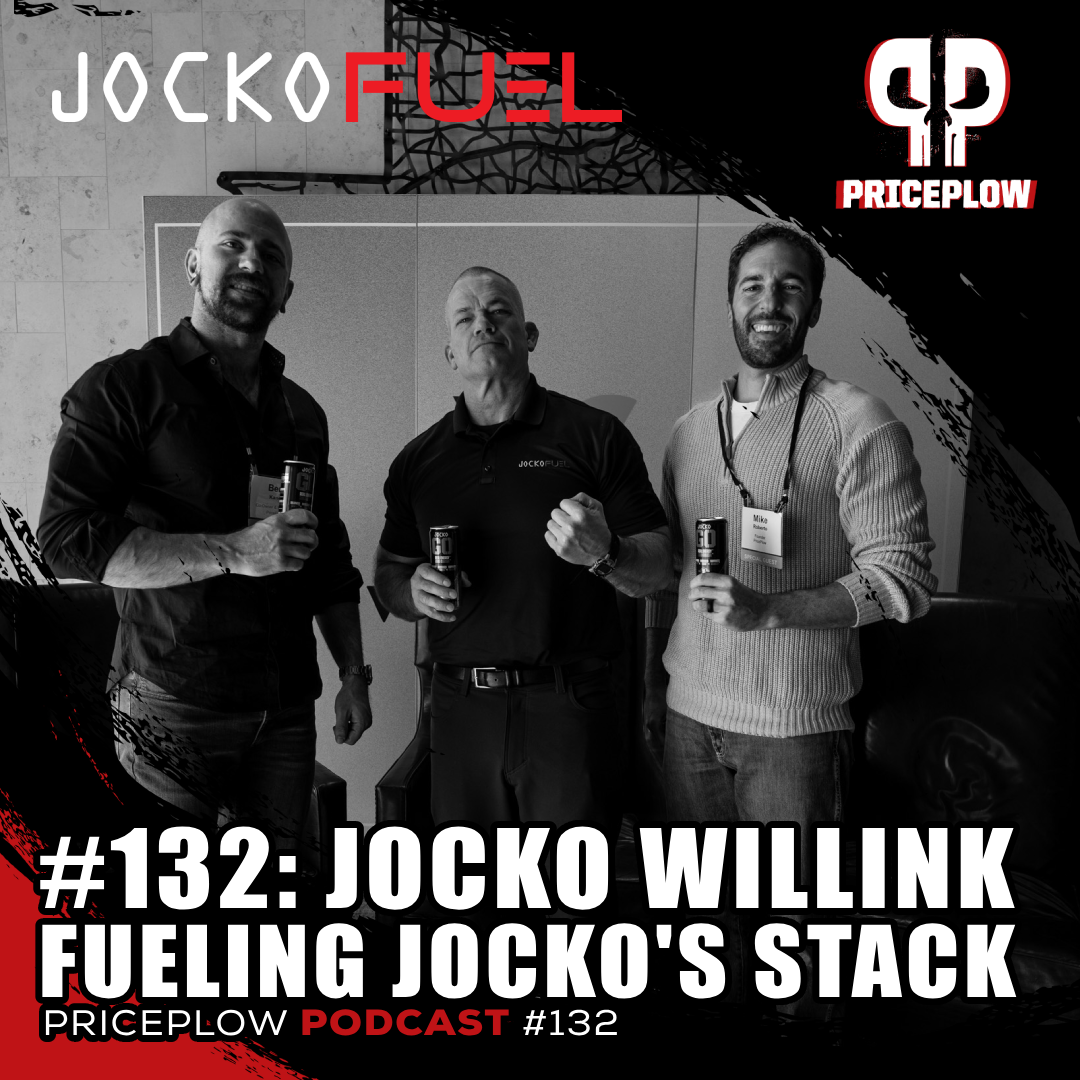
Jocko Willink joins PricePlow for Episode 132 to talk about founding Jocko Fuel, doing the right thing when formulating supplements, and Jocko's entire stack from start to finish
The Jocko brand is known not only for the charismatic, strong personality of its founder – Jocko Willink – but also for its finely-tuned formulation with a focus on the highest quality ingredients that money can buy. This blend has definitely taken some time, but as we learned with Jocko Hydrate RTD, it's been well worth it.
Once you begin down the road of health and fitness consciousness, it's tempting to think that the name of the game is sacrifice. While it is true that you need to be more conscientious of what you put in your body, there's no need to suffer through the process – especially with modern solutions like the GOOD Sweetener.
Jocko's sweetness blend doesn't sacrifice health or taste. It manages to capture the best of both worlds, and it leads to powerful formulas that are enjoyable to consume, like the Jocko Hydrate RTD, Mölk Protein, and more.
Jocko Fuel Hydrate Drink RTD – Deals and Price Drop Alerts
Get Price Alerts
No spam, no scams.
Disclosure: PricePlow relies on pricing from stores with which we have a business relationship. We work hard to keep pricing current, but you may find a better offer.
Posts are sponsored in part by the retailers and/or brands listed on this page.
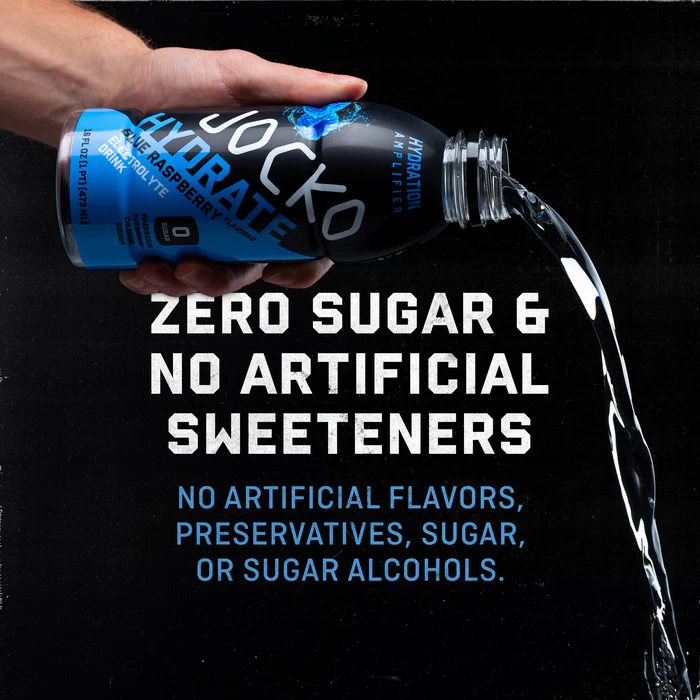
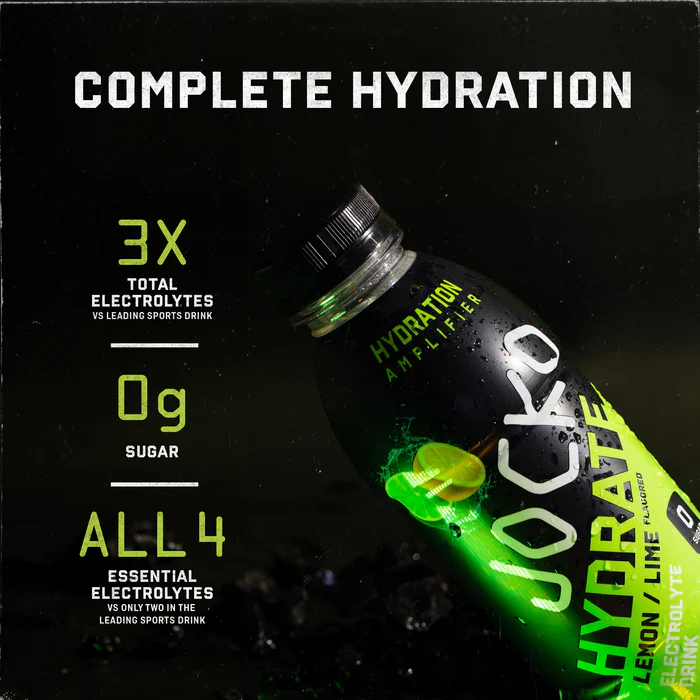
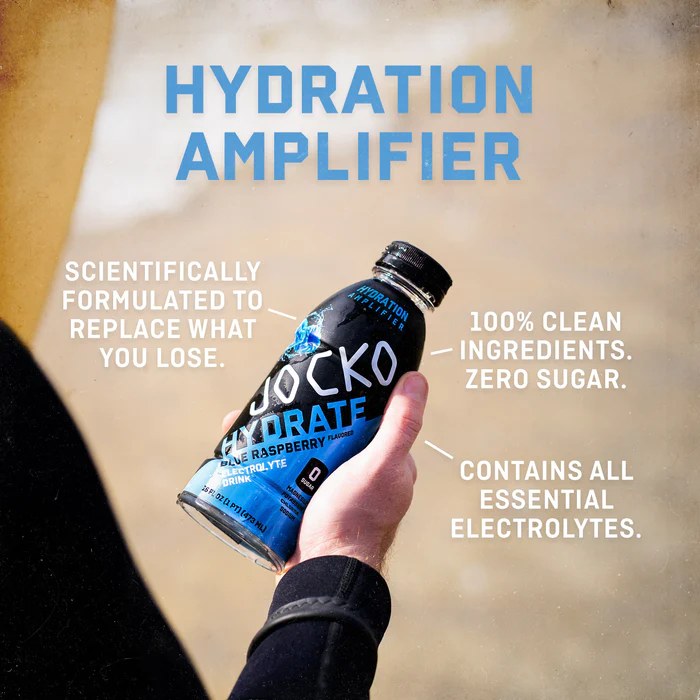


Comments and Discussion (Powered by the PricePlow Forum)